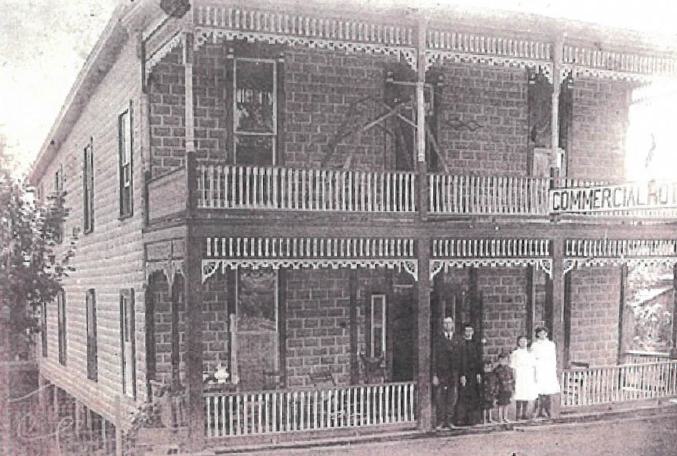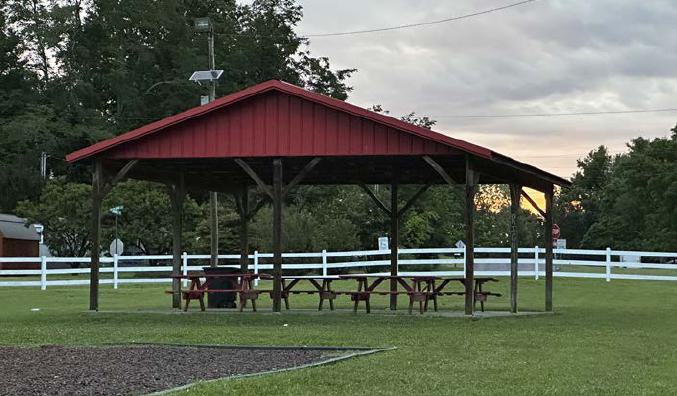Menu
Menu
Menu
The City of Westmoreland is located on the Highland Rim area of northeastern Sumner County, a small city with a growing population that has increased by 1.66% since the last recorded census in 2020. The city did not start that way though. Here’s an overview of the City’s history:
Westmoreland was founded as a location for early settlers who had that “westward-ho spirit” as stop-off on the trek to the middle part of the new State of Tennessee. Most of the early settlers came from North Carolina and Virginia. They settled in the area called Westmoreland because one of the early migrants was a wealthy lumberman from North Carolina by the name of Westmoreland. Shortly after Mr. Westmoreland came into the area, a man named Peter Staley recognized the potential of the unscathed area and he began to acquire land rights. In 1810, Mr. Staley established a stagecoach inn which would eventually become the tavern mentioned below.
It was about this time that the railroad company started buying property, as they wanted to create a village. The land ran through present-day downtown.Being located on the Highland Rim, some of the early buildings were built along the cliffs’ edges and this is shown in the way buildings were named. An original building in the area, which later hosted at least two US Presidents, Andrew Jackson and Benjamin Harrison, was a tavern. The tavern, known as “Rock House”, did play an important role in American politics and the railroad industry.
The City of Westmoreland was created by basic charter, Private Chapter 306, in 1901. The city was first incorporated on February 1, 1901.
The present-day downtown land was originally purchased to become a village for freight yards, parks, and a street on each side of the tracks. With the installation of these features there were hopes of it becoming a resort area. A sulfur water source was located approximately three miles away. With the influx of visitors coming for the medicinal benefits of the sulfur waters, a hotel was built in the town. In 1926, however, a massive fire destroyed the hotel, and it was never rebuilt.


The next event that impacted Westmoreland was the Great Depression. As a result of an economic downturn, the state legislature disbanded the city. During the ensuing decade of the 1940’s, many residents of the area wanted to continue to live there but being on the Highland Rim made it difficult to have a water source. In 1951, by a private act, the State General Assembly formed the incorporated City of Westmoreland once again.
In 1959, Westmoreland City Lake was completed which provided the city with its first water supply. Now, the city receives its water supply from the City of Gallatin. The City Lake is now incorporated into the parks department which hosts many community-wide events sponsored by the Vocational-Agricultural Department of the High School.
In the late 1970’s, the community achieved another important infrastructure feat by installing a vacuum sewer system, the third one in the country at that time.
The reincorporation of the city allowed it to develop infrastructure improvements by obtaining federal grants to enhance quality of life opportunities. But the City’s economic growth from the railroad was diminished by the closing of the tracks running through downtown on December 10, 1976.
This area of the downtown has now become mostly hard-surface paved parking spaces providing accessibility to the City Hall, Public Library, downtown businesses, and the City Community Building. All public meetings of the city take place in the Community Building.
The city has developed two main linear parks within the Downtown area.
Both past and present recreational programs are managed through City Hall with the Mayor being the responsible leader. The city has several ballfields, both soccer-type and softball/baseball fields. The activities in these fields are led by a parent/adult leaders’ team. The City provides insurance coverage and general upkeep, new amenities, lighting, etc. Each age group using the fields provides adult volunteers to mow and line ballfields.
Over the past few decades, the city leadership has attempted to have a voluntary Parks and Recreation Board. Within the last year, both Mayor David Leath and his predecessor created an active Parks and Recreation Board.

